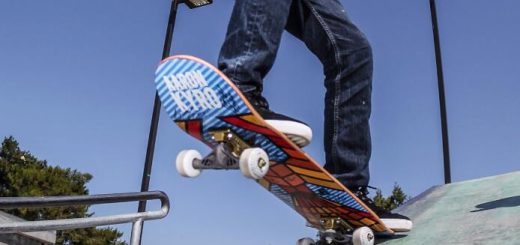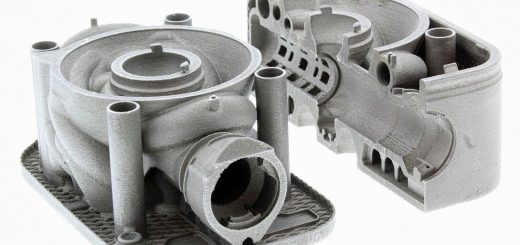Mediated Matter Group Presents 3D Printed Aguahoja: “Where The Grown And The Made Unite”
Neri Oxman and the Mediated Matter Group at MIT have unveiled a new 3D printing project. In Aguahoja, 3D printed lattices have been “shaped by water” to form large, sculptural chrysalides. Made from cellulose, chitosan and pectin, the pavilions are designed to demonstrate the possibilities of alternative, recyclable construction materials. They also exist as a statement about the importance of sustainable management of natural water sources, and protection of the biological lifecycle.
“Aguahoja recapitulates Nature’s material intelligence in the ways we design and fabricate the grown environment,” states the project’s overview. “In life, these materials modulate their properties in response to heat and humidity; in death, they dissociate in water to fuel new life…”
“Derived From Organic Matter, Printed By A Robot, And Shaped By Water, This Work Points Toward A Future Where The Grown And The Made Unite.”
![]() Nature against plastic
Nature against plastic
Cellulose, chitosan and pectin were chosen for the Aguahoja project as they are the three most abundant materials on Earth:- cellulose of course derived from green plants; chitosan from the exoskeleton of shrimps and other shelled creatures; and pectin from the cell walls of fruit and other plants. In this regard, and the fact that they are 100% recyclable, they are the antithesis of plastic.
Combined, the natural materials make a paste-like material, which is extruded through a robotic-arm attachment into a grid-like design. This design is pre-programmed by the team in several ways:
– First to achieve appropriate mechanical performance
– Second, changing color to create the right tone, and,
– Third, in response to water, a controlled degradation of the cells which creates leaf-like veins in the finished piece
 “Structural and environmental maps drive the generation of surface patterns that impact the mehanical and optical properties of the Aguahoja Pavilion across scales.” Image by The Mediated Matter Group. Courtesy of The Mediated Matter Group
“Structural and environmental maps drive the generation of surface patterns that impact the mehanical and optical properties of the Aguahoja Pavilion across scales.” Image by The Mediated Matter Group. Courtesy of The Mediated Matter Group
“Structural and environmental maps drive the generation of surface patterns that impact the
mehanical and optical properties of the Aguahoja Pavilion across scales.” Image by The Mediated Matter Group. Courtesy of The Mediated Matter Group
![]() Ashes to ashes, dust to dust, water to water…
Ashes to ashes, dust to dust, water to water…
Placing panels of these grids together, the team create their sculpture Aguahoja I – a monumental chrysalis, which is currently on display at the Pompidou in Paris. “At the end of its life cycle, when no longer useful,” the group explains the structure can be programmed to degrade in water…”
The vision is that, “This level of ‘environmental programming’ can in the future enable the construction of structures that modify their properties relative to the season: even small alterations to the molecular composition of biocomposites can have a dramatic impact on their design and their decay.”
 “Close view of a backlit section of the Aguahoja Pavilion.” Photo by The Mediated Matter Group. Courtesy of The Mediated Matter Group.
“Close view of a backlit section of the Aguahoja Pavilion.” Photo by The Mediated Matter Group. Courtesy of The Mediated Matter Group.
In addition, the team also created a series of Artifacts demonstrating the different grid patterns, and material mixtures tried in the lead up to the final sculpture.
Using similar techniques, a further, colorful sculpture, named Aguahoja II, is currently in development by the team and planned for release in the near future.
 Preview of Aguahoja II: “Pigments and dyes from natural sources are used to create gradients of color within a single fabricated object.” Photo by The Mediated Matter Group. Courtesy of The Mediated Matter Group
Preview of Aguahoja II: “Pigments and dyes from natural sources are used to create gradients of color within a single fabricated object.” Photo by The Mediated Matter Group. Courtesy of The Mediated Matter Group
Source: 3D Printing Industry




Recent Comments